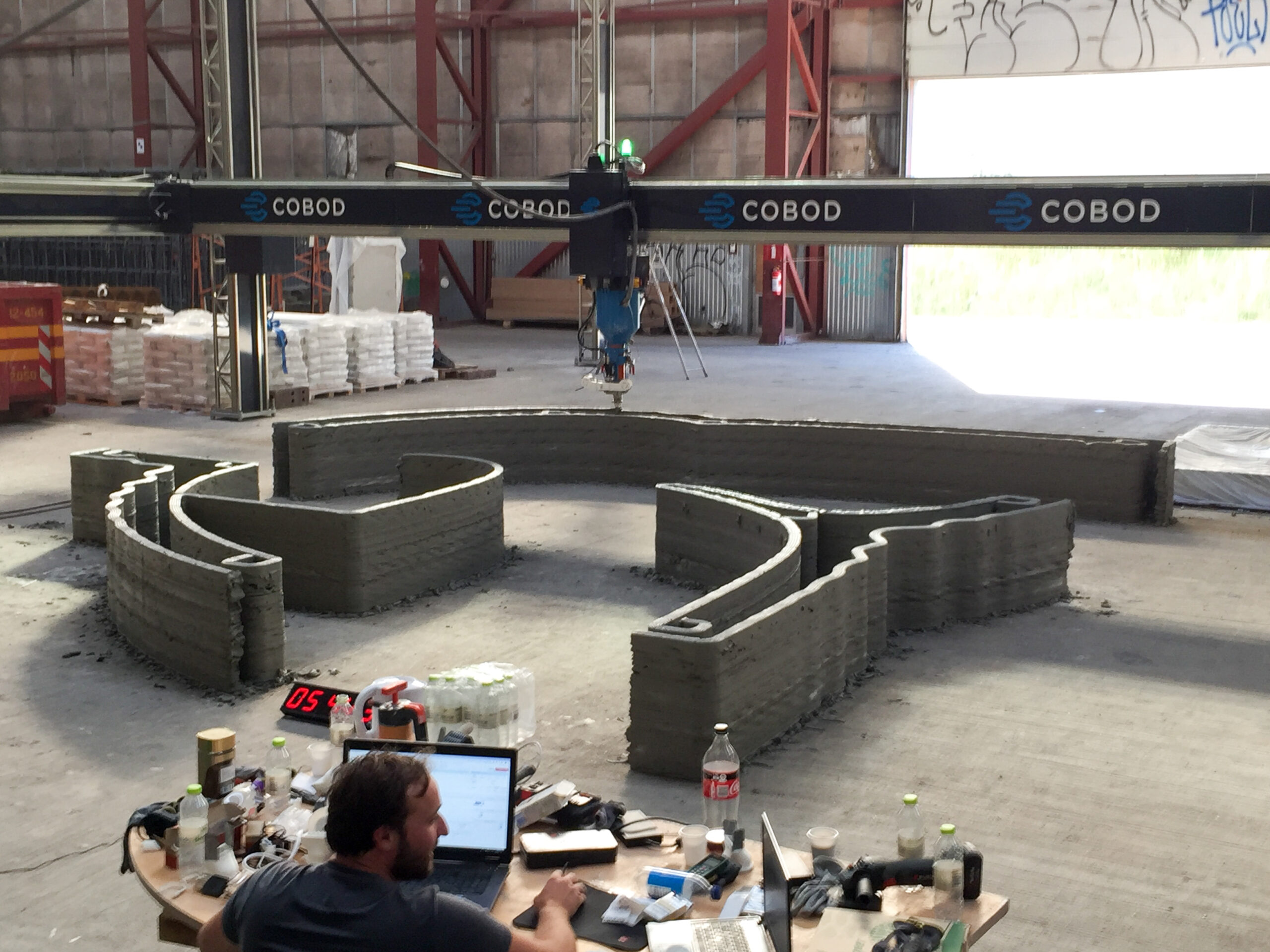Precisely two years ago on September 11, 2017 COBOD invited the press to see the start of the 3D printing of The BOD, Europe’s first 3D printed building. Now with their newly developed second generation BOD2 3D construction printer, COBOD has printed the same building again! The re-print was done to document the fast improvements of their 3D construction printing technology.
COBOD has already made several headlines this year with their new second generation printer, the BOD2, starting with the delivery of the first BOD2 printer in the beginning of the year to Belgian Kamp C, after COBOD won Kamp C’s European tender.
Later during the spring followed the news that COBOD also won the second European tender, and supplied a BOD2 printer to The Technological University of Denmark. Then during the summer COBOD finished and shipped the world’s so far largest 3D construction to the Middle East, the printer being able to print 300 sqm in 3 storeys for a total of 900 sqm printed building. COBOD now announces that it spend the last days of summer to re-print The BOD, Europe’s first 3D printed building.
Henrik Lund-Nielsen, CEO of COBOD, explained: “We have said time and time again, that this technology has great potential, is developing very fast and that there is still so much to be learned to fully utilize this technology. Today we provide the documentation for exactly that, by having 3D printed an identical building to The BOD building we did exactly two years ago. Although not everything went as well as expected, the results and improvements we achieved this time speaks for itself”.
Jakob Jørgensen, Head of Technology at COBOD, continued: “When we printed the original BOD building on September 11 two years ago, we spend 2 month finalizing the 3D printing. This time it only took 3 days, or 28,5 hours to be precise. This is truly a milestone in the development of the 3D construction printing technology, and documents a remarkable 20 times improvement in our productivity in just two years. The much faster print time of this print reflects the improvements of our technology by using the new, and 10 times faster BOD2 printer and that we have learned a lot from the first time we 3D printed the building”.
Different from other 3D constructing printing providers, COBOD not only has a fine track record of regularly supplying customers with printers, but they have also made it part of their profile to be very open and informative about what they have been doing, including what did not go as planned: To 3D print a building, or more precisely to 3D print the walls of a building, requires not only a 3D construction printer, but also a concrete mixer-pump that can deliver the print materials to the printhead of the printer and a suitable recipe for the print materials. For an optimal print speed and quality all 3 items have to work optimal, which was not entirely the case for COBOD during this re-print of The BOD building.
Michael Holm, Head of R&D at COBOD, explained: “We are extremely pleased with how well our new BOD2 printer performed during this test. The BOD2 3D construction printer has an impressive print speed of up to 100 cm/second, and during this print we could comfortably print with a speed of 35 cm/sec, which is faster than anybody before. However, our concrete mixer-pump could not continuously follow the printer at this speed, so for a lot of the print we actually had to slow down the printer to avoid running out of materials. Hence we are now working with our pump suppliers to overcome this barrier and truly utilize the full speed of our BOD2”.
As for the concrete recipe, COBOD also reported that they actually asked the supplier to reduce the setting time of the concrete too much by mistake, leading to an initial clocking of the materials in the hopper above the printhead, until they figured out to vibrate the materials in the hopper regularly. When that was done on the third day of printing, the productivity doubled from printing 10 cm of the BOD building per hour to 20 cm the last day. The 20 cm of building per hour corresponds to that a building with a 2,4 meter storey could be 3D printed in just 12 hours.
Henrik Lund-Nielsen concluded the announcement by explaining: “Again we learned a lot from applying our technology to a project. We are now converting the lessons that we learned into even better solutions for our customers going forward. Once we have done that, we believe we could 3D print the entire BOD building in just 8 hours, should we decide to print it again a third time. None the less, this re-print is a significant milestone. A milestone that documents the great potential of 3D construction printing”.


